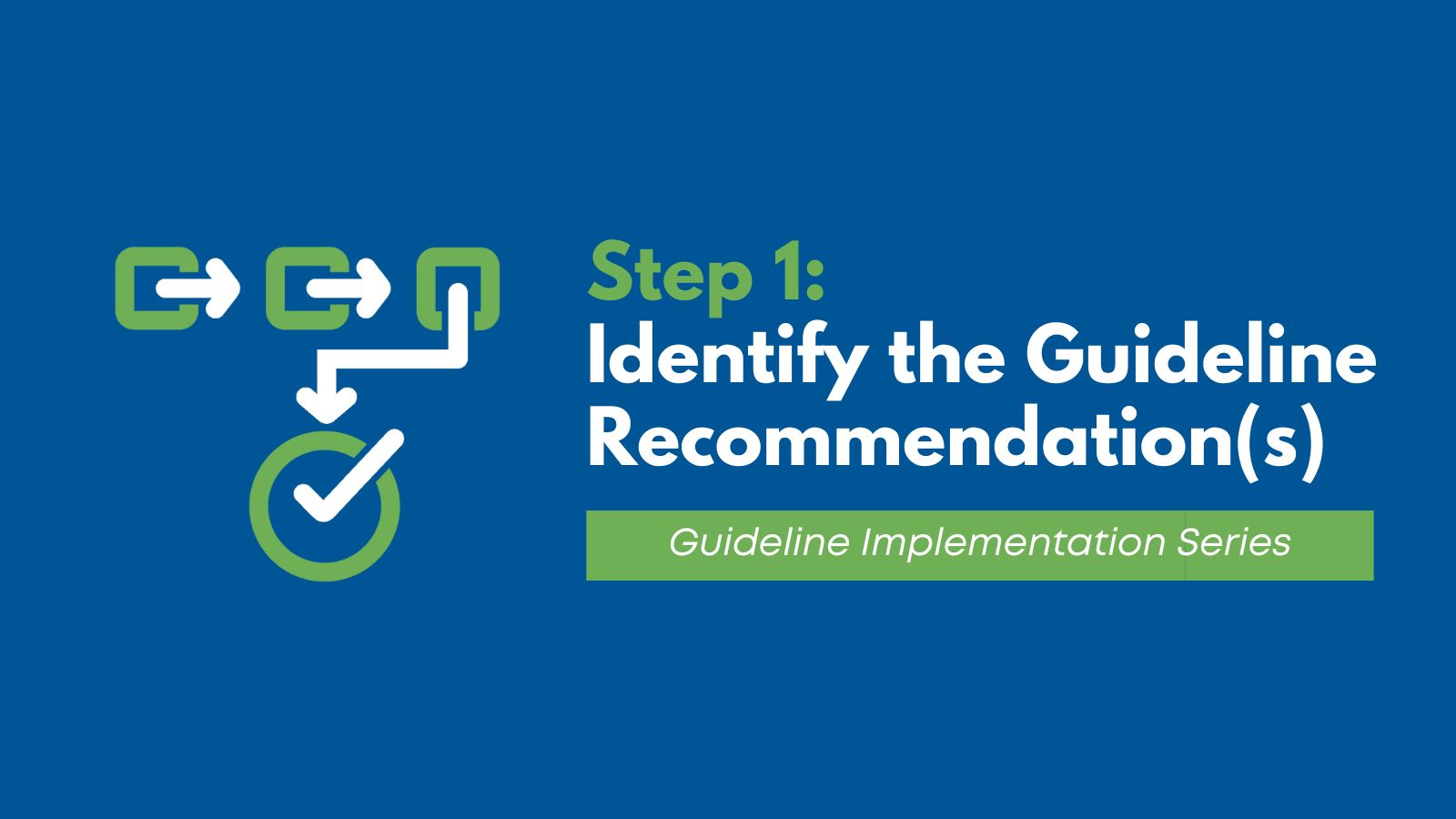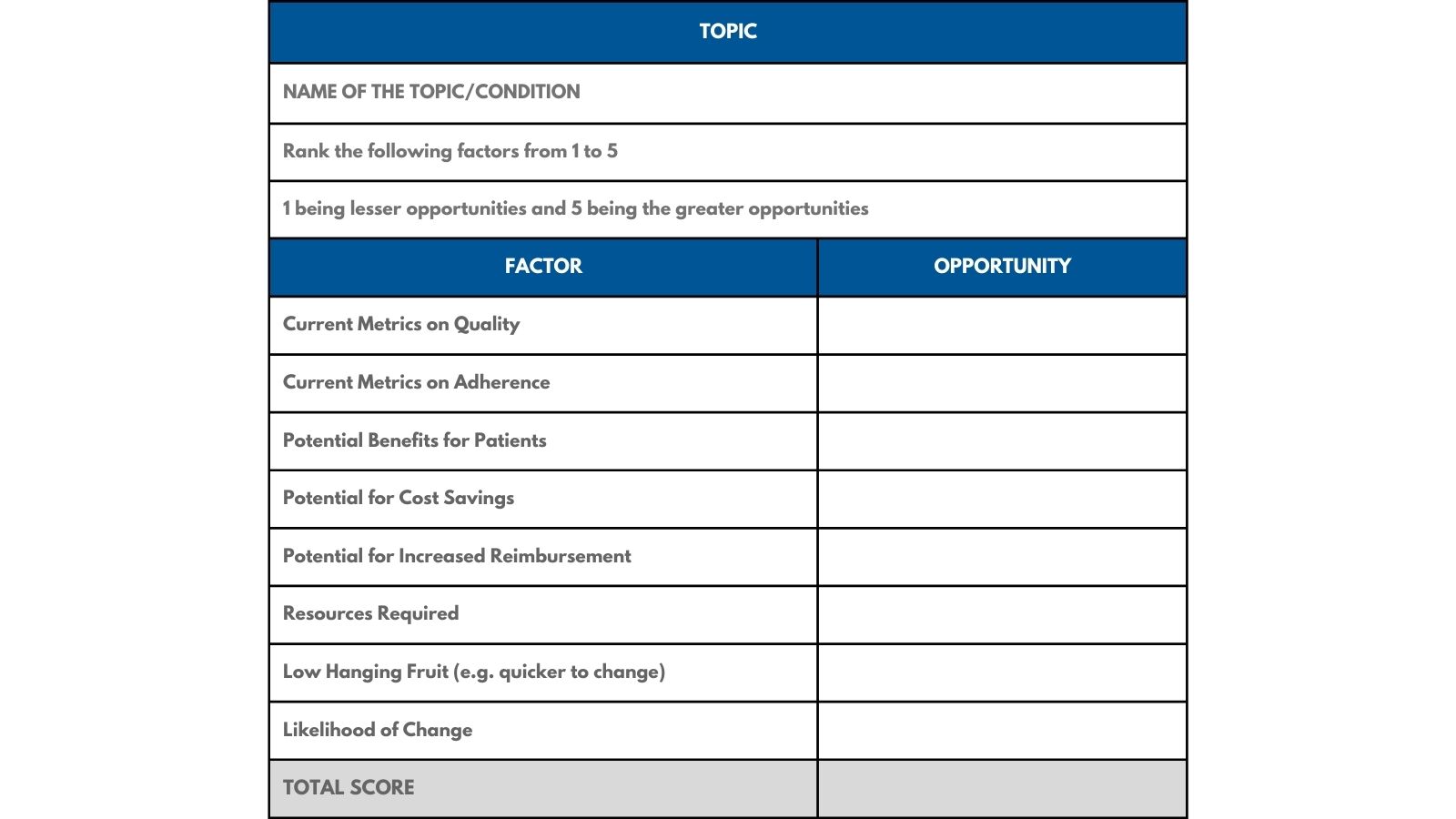
In a follow up to our previous article – Guideline Implementation Overview: 7 Steps to Improve Clinical Guideline Adherence at your Organization – we are taking a deeper dive into the first step – identifying the key guidelines/guideline recommendation to implement.
STEP 1 is actually a multi-part step, so we will be breaking STEP 1 down into its own steps!
The first thing that you will likely realize is that there are likely dozens, if not hundreds of clinical practice guidelines that would be beneficial to incorporate into your focused guideline implementation campaigns. All of those guidelines have between 10-30 separate individual recommendations within them. So doing the math, you can see that this is not going to be a one-time effort – it will be an ongoing, ever growing effort.
One way to speed up the time it will take to identify all available and relevant guidelines on a given topic would be to use a credible guideline repository website. We know a good one you can use – the Guideline Central Guidelines Library! Use the search function, as well as browse features to help compile your list of relevant guidelines, which you can then format into a spreadsheet of possibilities containing the following data elements:
- Authoring Organization(s)
- Title of Guideline
- Publication Date of Guideline
- Link to Full-Text Guideline
- Relevant Methodology and Supporting Documents
- Supplemental Implementation Tools
Once the sheet is populated you can start digging into each of the guidelines. Try to put together a list of each of the key topic areas, and then a list of the key recommendations from each guideline in each key topic area. You will end up with a list of recommendations for the given topic(s), but you’ll still need to whittle that down into an actionable list for your implementation campaign. To do that, you need to prioritize! There are many different options and factors to consider when prioritizing the guideline(s) to focus on for your initial implementation program.
Factors to consider when determining priorities for guideline implementation initiative:
- Where are the current gaps and biggest opportunities for improvement?
- Based on historical metrics, identify the area(s) where the greatest improvement is possible. Keep it fairly high level for this exercise. In subsequent steps we will talk about how to get a detailed measure of current practices.
- What are the potential benefits for patients?
- Consider the potential impact on patient outcomes if you increase adherence by various percentage points.
- What are the potential cost savings or potential for increased reimbursements?
- Is an increase in adherence going to reduce costs? Is it going to increase the amount of reimbursement you may quality for? Will it do both? All of this should be factored into your decision for the best starting point.
- What resources might be required to implement these guidelines or recommendations?
- Certain quality improvements efforts will involve more resources than others. Consider both financial resources, such as equipment, as well as potential personnel resources. And most importantly, consider time too.
- Which recommendations are “low hanging fruit” in terms of how quickly we can make change happen?
- This is an often-overlooked piece of the puzzle. You should think strategically. If guideline implementation programs are new to your organization, it’s best to start with the quick wins to get the necessary buy in from colleagues and leadership that will be needed to tackle the larger fish.
- What is the likelihood of success/change?
- This is similar to the low hanging fruit question, but instead assessing from the opposite direction. Here we want to consider which of the topics are at the greatest risk for limited success.
You can even use this quick cheat sheet to help with the prioritization. Add up the scores for various topics/recommendations to help identify where you’ll be getting the best bang for your buck.

Now that you have the list of guidelines and guideline recommendations and you’ve decided which one(s) to start with, you can move on to the next step – STEP 2. And you’ll have to wait for our next installment in the series for that step!
Copyright © 2023 Guideline Central, All rights reserved.